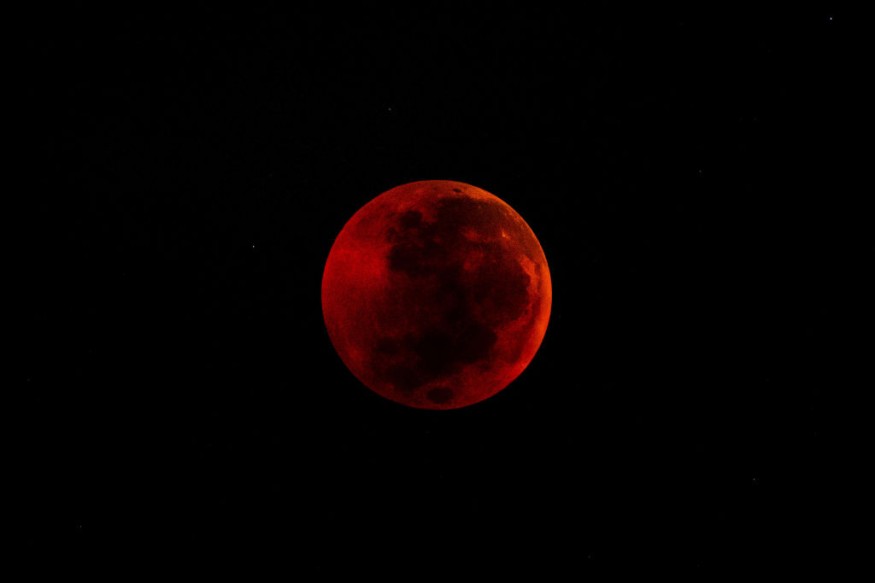During the total lunar eclipse, "the darkest terrestrial disk is ringed by every sunrise and every sunset in the world," all at the same time, causing the moon to turn red, according to NASA.
A Live Science report said even though the Earth is way bigger than the Sun, the light of the home star is bending around the edges of this planet. This light then gets reflected onto the moon.
The only total lunar eclipse this year, is lighting up the sky on Wednesday, May 26, when the full moon, a supermoon due to the nearness of satellite to Earth, passes through this planet's shadow.
During this so-called "Super Flower Blood Moon" lunar eclipse, the moon's face will turn brick-red hue. This report describes the flaming glow as the most dramatic among the three lunar eclipse types.
The other two, are identified in the EarthSky site as identified as partial and penumbral lunar eclipses. Additionally, this science report specified, perfection is a must. Meaning, a total eclipse takes place only when the Earth, sun, and moon are all perfectly lined up.

Why the Blood-Red Glow of the Moon?
When the moon is tiptoeing into the outer portion of the shadow of Earth, it is turning out to be totally bathed in that particular shadow's darkest part.
A lot of people wonder why the result is not a "lights out" for the sky." Instead, the moon is becoming surrounded with a light-orange to blood-red glow.
The reason for this is that if one imagines himself standing on the moon with lots of dust and craters at his feet, looking down on this Planet during the remarkable night-sky occurrence. When this planet is directly in front of the sun, blocking the rays of the sun from lighting up the moon, he would see a blazing rim ringing the planet.
But not before it moves through the Earth's atmosphere, which is filtering out the shorter-wavelength blue light, leaving the oranges and reds unharmed to bathe the surface of the moon, eventually becoming a red moon.
What We'll See During the Total Lunar Eclipse
The moon will change different shades during various stages of the total lunar eclipse, going from an original grayish to orange and amber.
Atmospheric occurrences can impact the brightness of the colors, as well. For example, extra particles in the atmosphere like ash from the large wildfire, or the recent eruption of a volcano, may lead the moon to look a darker red of shade, explained NASA.
The moon does not always completely hide behind the shadow of Earth. During partial lunar eclipses, the Earth, sun, and moon are a little off in their alignment, and so, the shadow of the earth is engulfing just a portion of the Moon.
A beginner or newbie skywatcher might not even be able to see or notice this third type of the lunar eclipse, the penumbral kind, in which the moon is sitting in the penumbra of Earth, or its faint external shadow.
According to timeanddate.com, the total lunar eclipse on Wednesday is expected to be visible in Australia, some parts of the western United States, western South America, and Southeast Asia.
Other parts of the world which include the whole US, will be able to see at least, some phases of the lunar eclipse which include its partial and penumbral stages.
Related information about the Total Lunar Eclipse 2021 is shown on Space Time's YouTube video below:
RELATED ARTICLE : What Makes The Upcoming Hunter's Blue Moon Rare
Check out more news and information on Eclipse and Full Moon on Science Times.
© 2025 ScienceTimes.com All rights reserved. Do not reproduce without permission. The window to the world of Science Times.












